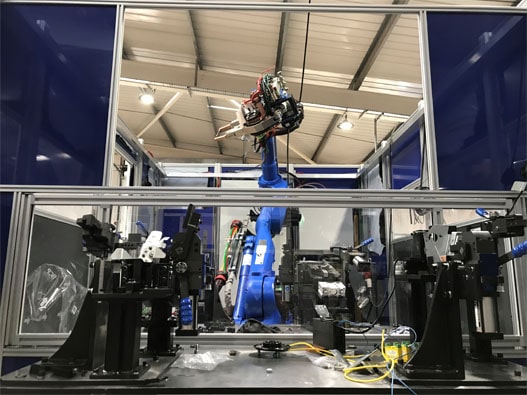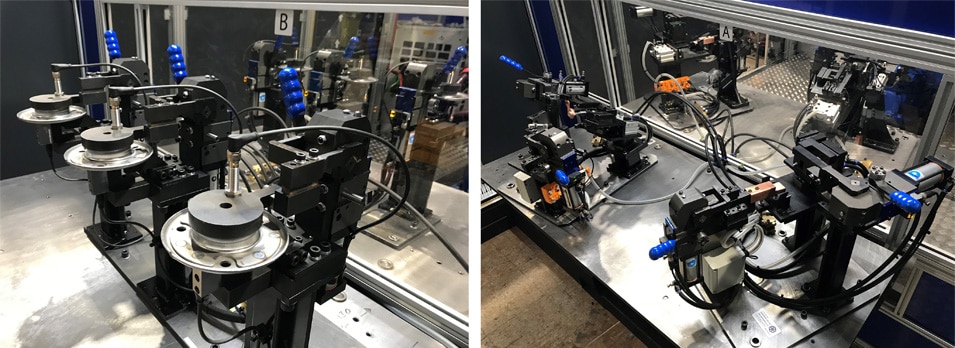A perfect example of this is when you consider one of our most recent spot welding systems, shipped to a Tier 1 customer producing parts for the automotive industry. The system is based on our HiSpot 2000 concept, a spot welding system featuring a Kyrus T-Series turntable, but once you delve into the additional selections made by the customer, it becomes clear that our systems are much more than ‘one system for one job’.

Features & Innovative Additions
Comprising of a Yaskawa MS165 robot and Nawootec spot welding gun designed specifically for the job, all necessary cables and pipework are safely integrated with the robot using a Becker loom. The welding is then controlled from a BF Entron power source with each weld monitored and managed by Harms & Wende PQS (Process and Quality Management System), innovative addition to the welding industry that monitors each individual weld for any abnormalities during the process.
Available in the UK through Bauromat, for want of a better phrase, the system learns from its mistakes, meaning that welds will become better and better as you complete more and more cycles. All data is then stored locally on a laptop or computer and can be analysed within the PQS software. Here, engineers can monitor any patterns or abnormalities in all weld cycles, ironing out any potential user or system errors. What’s more, PQS can even be easily retrofitted onto existing systems that you may already have, allowing you to get a better and more consistent weld quality, no matter how long you've been welding for.
If this is something you may want to consider, don’t hesitate to get in touch with our sales team who’ll be happy to provide you with more information.
The system also features Bauromat’s all-new HMI system, B.O.S (Bauromat Operating System) which has been entirely designed and programmed in-house by our expert PLC Engineers. Presented on a SIGMATEK touch screen HMI panel and fitted into the vertical post for seamless integration, everything is accessible through a few simple touches, from monitoring the tooling & clamping of parts to viewing the cycle via the CCTV camera installed with the system. The all-new system also allows for remote access to the interface, enabling Bauromat engineers to assist with any potential stumbling blocks without having to be on site.
As with all Bauromat manufactured welding systems, the tooling has been designed from the ground up too, purpose-built for the two sets of parts needed to be produced. This meant that as well as designing and manufacturing two sets, they had to be easily changeable to prevent any loss of production time. The tooling is simply unbolted when its production cycle is complete, lifted off the turntable and replaced with the set for the second part, aligning with the tapped holes in the turntable.

Shipping
Prior to designing the system, the customer specified that there would be some ‘tight corners’ to navigate and that in order for the system to be moved into position, production in other areas may have had to temporarily halt. Thankfully, our designers created a simple solution that prevents any headaches when it comes to shipping and installation, breaking the system into two equal halves.
[URIS id=1487]
Although the system was manufactured as a single unit, it wasn’t until shipping that this feature came into use. The base was made up of two smaller bases, simply bolted down the middle so that when it came to preparing the system for shipping, all that needed to be done was to remove one of the Talos guarding panels on either side of the system, unbolt the connecting steel base frames and manoeuvre each of the halves into position. Then, on arrival, the process simply needs to be done, but in reverse. Move the halves into position, bolt the frames together and assemble the guarding.
For any more information on the features mentioned or general system enquiries, please don’t hesitate to get in contact.
Send us your question & let us know how we can help you
Bauromat
Stafford Park 6
Telford
TF3 3AT
United Kingdom